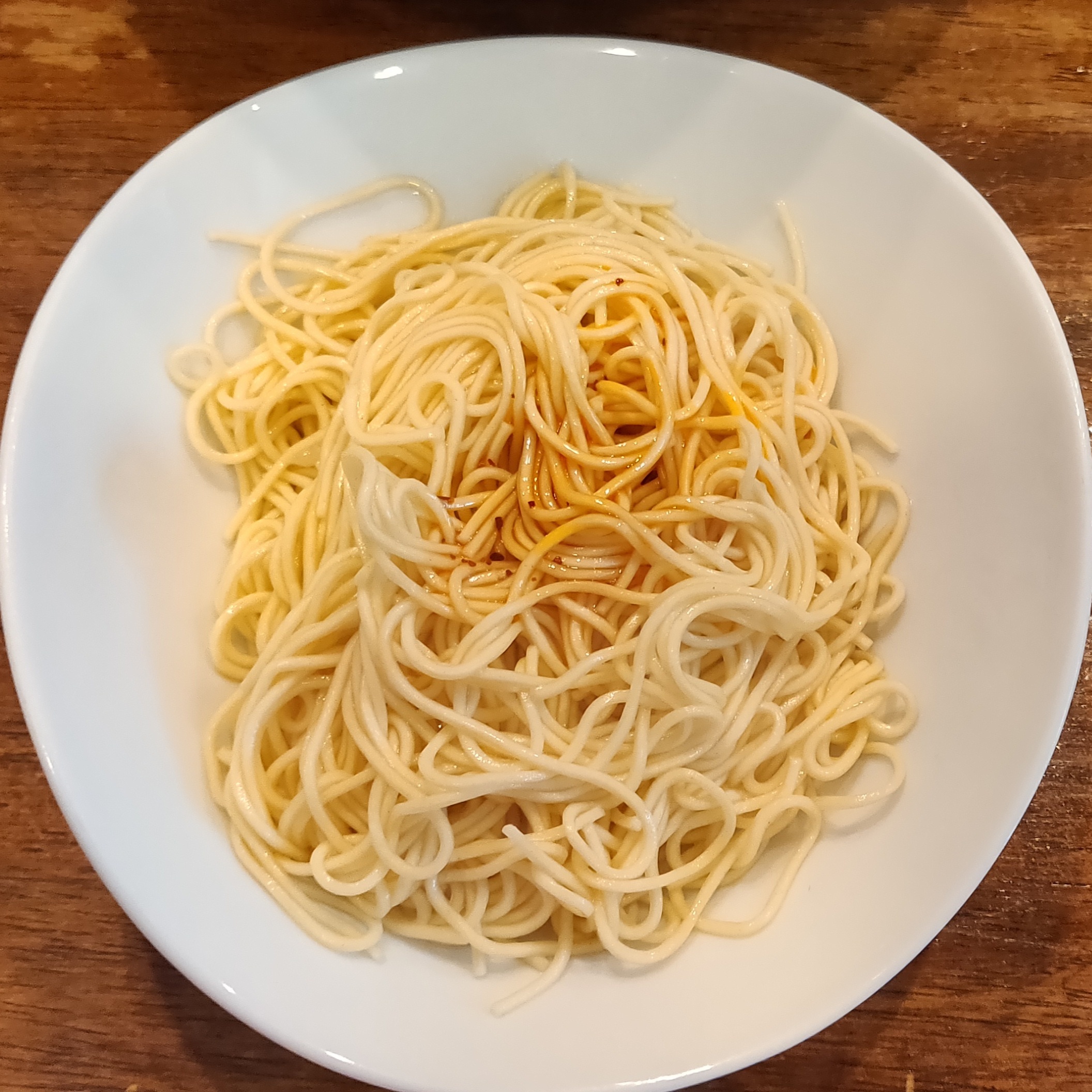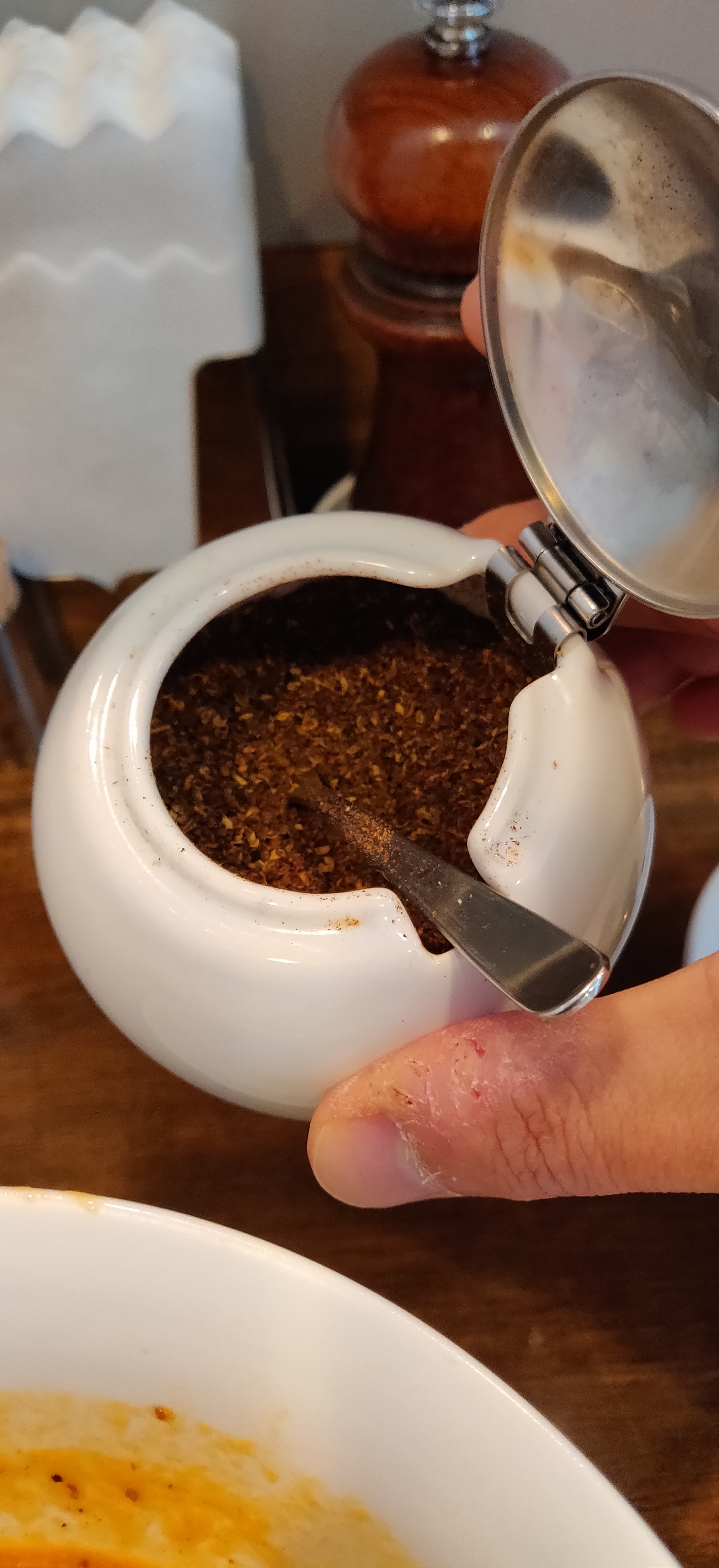Sousakumenkoubou Nakiryu (鳴龍); Second Michelin Star Ramen Restaurant; Otsuka
It’s been a long time coming for me to finally visit the famous Tantanmen shop Nakiryu as it was the last remaining Michelin Star ramen restaurant I’ve yet to review on this site. A number of reason (excuses) kept me from reviewing Nakiryu until now including, but not limited to, me not being the biggest fan of Tantanmen, not wanting to stand in an absurdly long line, and my disappointment in the other two Michelin Star ramen shops I’ve been to so far. I finally made the leap of faith and endured the long line at Nakiryu this past week and I must say, I was pleasantly surprised that Nakiryu did in fact live up to my expectations. For transparency sake, although I’ve eaten at tons of ramen restaurants and I pride myself in being unbiased with all ramen varieties and shops, I’m not the biggest fan of Tantanmen. That being said I thought the Tantanmen at Nakiryu was the best I’ve ever had. Take my review with a grain of salt as I may be a bit out of my realm in rating Tantanmen. Anyways, back to my review.
Nakiryus has two different opening times, one for lunch and they reopen again for dinner. On Mondays Nakiryu is only open for lunch and they are closed on Tuesdays so be aware of what day you decide to go. For lunch Nakiryu is open from 11:30-15:00, and dinner hours are 18:00-21:00. They do have different menus for lunch and dinner outside the ramen they serve which I will get in to later. On this visit I arrived at Nakiryu at 10:30 and there was already a line of about 25 people. The first group of about 5-6 people claimed they got there at 8 am, so I would suggest may be getting there at around 9 am if you want to be the first 18 people served (there are 9 seats in the restaurant). The queue tends to run differently depending on who are in line. In my experience, tourists that come in group tend to take longer as they wait until everyone is finished with their meal as opposed to Japanese customers who leave once they are done regardless of whether the other people in the group have finished or not. I had a mixed bag of both Japanese and tourists and it took about an hour the first time I went. Second time I went, it only took about 15 minutes at around 14:00, but I admittedly was quite lucky as I learned later on that is rarely the case. Nakiryu does have a twitter @NAKIRYU if you want to make sure they haven’t run out in case you end up going past 14:00.
The menu here at Nakiryu is quite extensive and offer different things during lunch and dinner. The dinner menu includes essentially everything so if you’re looking at some side dishes to supplement your ramen, I’d suggest coming during the dinner hours rather than lunch when I chose to come. As the sign on the machine says, you’re only allowed one bowl per customer so you’ll have to make the decision on which of the four ramen styles you’d like most. The Tantanmen is the most popular and is what Nakiryu is most famous for so I opted for the spicy version of the Tantanmen on this visit. I will have to try the other options in the future and supplement this review, but for now I will focus on the Tantanmen. Due to the popularity of Nakiryu after receiving a Michelin Star, a large number of patrons here are foreigners so an English menu is offered to those standing in line that need it. Although the English menu corresponds to the machine, the machine itself does not have any English translations on them so I’ll translate them here so you have something to reference. The first two rows are for the spicy ramen varieties, which at Nakiryu is their famous Tantanmen. The first button on the top left is the regular Tantanmen and next to it is the Ma-ra-Tantanmen, which is their extra spicy version. The first button on the second row is the Su-ra-men, which is a hot and sour noodle soup and the buttons next to that is the Kaedama (extra noodles, only for the Tantanmen and Ma-ra-Tantanmen) and Cilantro/Coriander topping. The third row starts with the Tokusei Shoyu Ramen (Shoyu Ramen, all toppings), Shoyu Ramen (regular), Ajitama Shoyu Ramen (with soft boiled egg), Shoyu Ebi Won Ton Ramen (with shrimp won tons), Shoyu Char Siu Men (with extra roast pork char siu), and Men Oomori (extra noodles). The fourth row are the Shio or salt ramen options of Tokusei Shio Ramen (Shio Ramen, all toppings), Shio Ramen (regular), Ajitama Shio Ramen (with soft boiled egg), Shio Ebi Won Ton Ramen (with shrimp won tons), Shio Char Siu Men (with extra roast pork char siu), and Men Oomori (extra noodles). The fifth row are the Tsukemen options of Tantan Tsukemen (tsukemen version of the Tantanmen) and Shoyu Tsukemen (Shoyu ramen version). On the right of that is Tsukemen Oomori (extra noodles) and the Gentei, or specialty menu items in varying prices. There were no special menu items on my visit, but if there is, there will be a sign indicating what that is, as well as it’s corresponding price. The yellow buttons below that are the toppings from Char Siu (3 slices), Char Siu (5 slices), Ajitsuke Tamago (soft boiled egg), Ebi Won Ton (shrimp won ton), Menma (bamboo shoots), Nori (dried seaweed), Kujyou Negi (green onions), and Shira Negi (leek). The teal buttons are the rice bowls which are the Char Siu Gohan (char siu over rice), Shirasu Tamago Kake Gohan (white bait and raw egg over rice), Kujyo Negi Gohan (green onions and rice), Gohan (plain rice), and the lunch special Chiisai Char Siu Gohan (small char siu over rice). The buttons below that are the dinner only menu items which are the Sui Gyoza (boiled dumplings), Aburi Yaki Char Siu (grilled, thick slice char siu), Ebi Won Ton (shrimp won ton platter), Shirasu Hiyayakko (white bait over tofu), and Goma Kyuri (sesame seed cucumber). Finally the last row are the drinks of Beer, Oolong Hi (shochu with oolong tea), Rokucha Hi (shochu with green tea), Nama Lemon Sour (shochu with lemon juice), Coke, and Oolong tea. As for me, I ended up opting for their Ma-Ra-Tantanmen with the Coriander topping, Kaedama extra noodles, and a side of their lunch special char siu over rice.
As your place in line approaches, you’ll be asked to buy your tickets at the machines. After purchasing your tickets, a staff member will direct you to your seat and hand you a glass of water as they take your tickets. About seven minutes later my bowl was carefully placed in front of me with my side of cilantro. As I said before, I’m not the biggest fan of Tantanmen. I love spicy food and I love ramen, but for whatever reason I never found a love for this dish. However, I can appreciate good food when given to me and my god, this bowl was fantastic. To start, the aesthetics of the bowl is about as gorgeous as ramen can be. The marbled soup of yellow sesame paste, orange chili oil, and red chili against the white backdrop of the bowl makes it a sight to marvel. My green cilantro vibrantly shined when I placed them in the soup and I loved the green and red color contrast. First impression of the soup is that it surprisingly had a stronger sesame seed flavor than I expected. Chi-majyan, or sesame paste, is used quite liberally and helps balance the spiciness of the ra-yu, or chili oil. Of course, being the spicy food lover, I got the extra hot version with the chili paste placed on top that counteracts most of the sesame seeds’ balancing act, but I did appreciate that I could taste it beforehand as they don’t mix the extra chili paste into the soup. To round out the flavor of the soup, the shoyu ramen soup and bits of peanuts are mixed in to the broth creating an amazing mix of savory and spicy. Now I know some people can’t handle the taste of cilantro, so obviously I can’t recommend it to all of you, but I feel like it is a must order here. The cilantro adds the extra herbiness to the soup that is out of this world.
The noodles at Nakiryu is made in house and is a straight, thin noodle typically seen in Tonkotsu style ramen. Since the soup is creamier than a typical ramen, this style of thin noodles pairs perfectly with the soup. As you can see from the photo, the noodles cling the perfect amount of soup for each bite. It’s served a bit al dente so the bit of chew of the noodles gives a nice texture change from the thick soup. The green onions are shocked after cut so they have a crunchiness and a bit of freshness to the bowl that is much appreciated. At the table is a pepper mill and some ground Japanese sansho peppercorn. I assume the black pepper is for the regular shoyu ramen and the sansho peppercorn is for this tantanmen. Sansho is a bit of a unique flavor and might not suit the palette for some so add it with a bit of caution. Sansho has a bit of a citrus aftertaste with a tingling burn at first. Again, its not for everyone so add it cautiously if you’ve never had it before. Finally, before finishing up my soup, I requested for my Kaedama, or extra noodles. I would say its not totally necessary if you supplement your ramen with side dishes, but I definitely enjoyed being able to finish my soup with the extra serving.
And of course, a Ramen Guide Japan trip wouldn’t be complete without an order of a char siu rice bowl. During lunch hours, they have this smaller version from the dinner menu item and it was the perfect amount for me as I ordered extra noodles. The rice bowl actually came out at the same time as my ramen and so I decided to eat my tantanmen while it was still hot before moving on to this dish. For the price, this really doesn’t get any better. As you can probably tell from the photo, the pork char siu blocks are huge and they really pile it in to the small little bowl. A bit of green onions are carefully placed on top of the pork char siu and makes it an incredibly filling and flavorful rice bowl.
I was a bit apprehensive about reviewing Nakiryu after my visits to the other Michelin Star winning ramen restaurants ended in disappointment, but I am happy to say Nakiryu lived up to the lofty expectations. And this praise is coming from a guy who doesn’t particularly like Tantanmen as well! The soup, noodles, rice bowl, service, decor, and atmosphere all met my standards of what a Michelin Star ramen should be. Look, I understand that when people come searching for ramen in Japan, they immediately get drawn to those that win awards such as Japanese Soba Noodle Tsuta and Konjiki Hototogisu in addition to Nakiryu, but I was a firm believer that other ramen restaurants deserve visits. However, if you must go to one that has gotten one of the most coveted restaurant awards in the world, this is it. As always let me know if you end up eating a bowl at Nakiryu on Instagram, twitter, facebook or in the comment section below!







